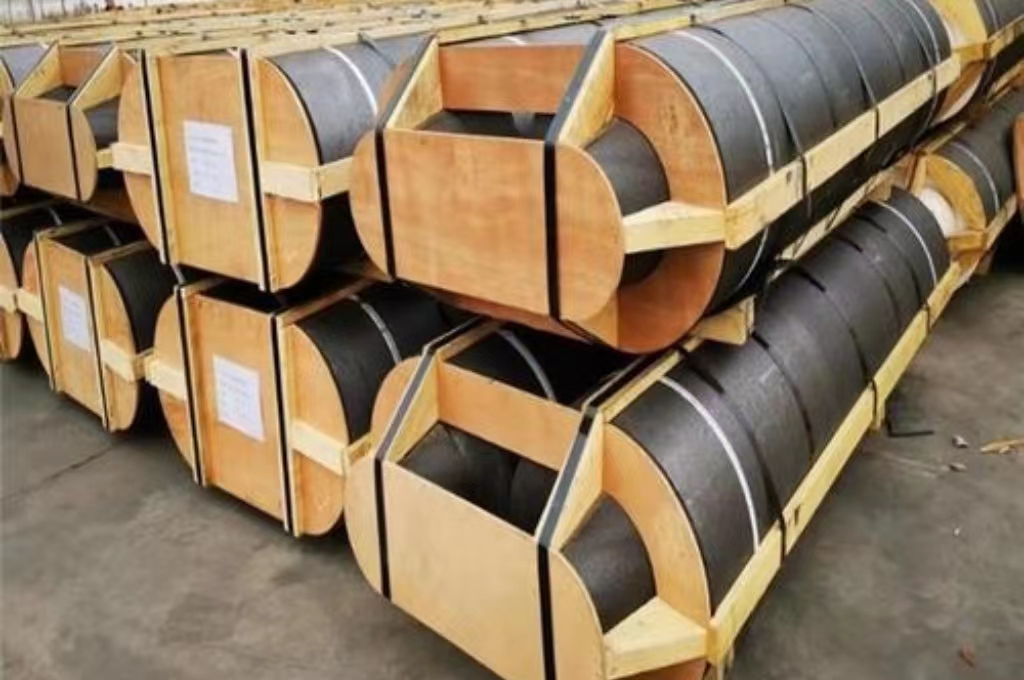Introducción:
Los electrodos de grafito son esenciales en los hornos de arco eléctrico para fabricar acero y otros metales. Entender cómo se fabrican proporciona información valiosa sobre sus propiedades únicas y el intrincado proceso de fabricación. En este blog se examina paso a paso el proceso de fabricación de los electrodos de grafito.
Índice
TogglePreparación de la materia prima:
La producción de electrodos de grafito comienza con la selección y preparación de materias primas de calidad. Coque de petróleoLas principales materias primas utilizadas son la brea de alquitrán de hulla y el grafito natural. Se someten a un riguroso proceso de cribado y purificación para eliminar impurezas y garantizar un contenido óptimo de carbono.
Mezclar y combinar:
Las materias primas preparadas se mezclan cuidadosamente en proporciones específicas para lograr la composición deseada. Este paso garantiza la uniformidad y homogeneidad del producto resultante. electrodo material.
Formación:
A continuación, los materiales mezclados se someten al proceso de conformado, transformándose en la forma de electrodo deseada. Existen dos métodos de conformado habituales:
a. Extrusión: En este método, el material mezclado se hace pasar por una matriz de extrusión especialmente diseñada para producir barras cilíndricas largas. A continuación, las varillas extruidas se cortan en las longitudes deseadas para formar electrodos.
b. Prensado isostático: Esta técnica consiste en introducir el material mezclado en un molde flexible y someterlo a alta presión isostática. La Prensa URE Asegura Una Densidad Uniforme Y Elimina Cualquier Vacío, Dando Como Resultado Electroges Con Excel Todo Corriente.
Hornear:
Los electrodos de grafito formados se someten a un proceso de cocción en un horno de alta temperatura. La temperatura de cocción puede alcanzar los 3.000 grados Celsius. Este tratamiento térmico elimina los compuestos volátiles, purifica aún más el material y mejora las propiedades mecánicas de los electrodos.
Impregnación (opcional):
Ocasionalmente, los electrodos de grafito pueden someterse a un proceso de impregnación para mejorar su rendimiento. La impregnación consiste en rellenar los poros de los electrodos con brea o resina, lo que aumenta su densidad, fuerza y resistencia a la oxidación.
Grafitización
La grafitización del electrodo se realiza principalmente mediante calentamiento eléctrico y colocándolo en un grafitización horno. Su finalidad es mejorar la conductividad térmica y eléctrica de los productos de alta resistencia y aumentar la estabilidad química.
Mecanizado y acabado:
Los electrodos de grafito cocido se mecanizan y acaban para que cumplan las dimensiones, tolerancias y suavidad de superficie requeridas. Este paso garantiza que los electrodos se adapten con precisión a las aplicaciones previstas.
Control de calidad y pruebas:
A lo largo de la fabricación, se aplican rigurosas medidas de control de calidad para garantizar que los electrodos de grafito finales cumplen las especificaciones deseadas. Las pruebas pueden incluir mediciones de resistencia eléctrica, resistencia a la flexión, densidady otros parámetros relevantes.
Conclusión:
El proceso de fabricación de electrodos de grafito, desde la preparación de la materia prima hasta el conformado, la cocción, la impregnación y el acabado, cada paso contribuye a la calidad final y la funcionalidad de los electrodos. Al comprender el proceso de fabricación, las industrias pueden apreciar la destreza y la precisión en la producción que satisfacen los exigentes requisitos de la industria moderna. siderurgia eaf y otros procesos de producción de metales. Por lo tanto, la elección del fabricante de electrodos de grafito garantizará su proceso de fabricación de acero en horno de arco eléctrico.

